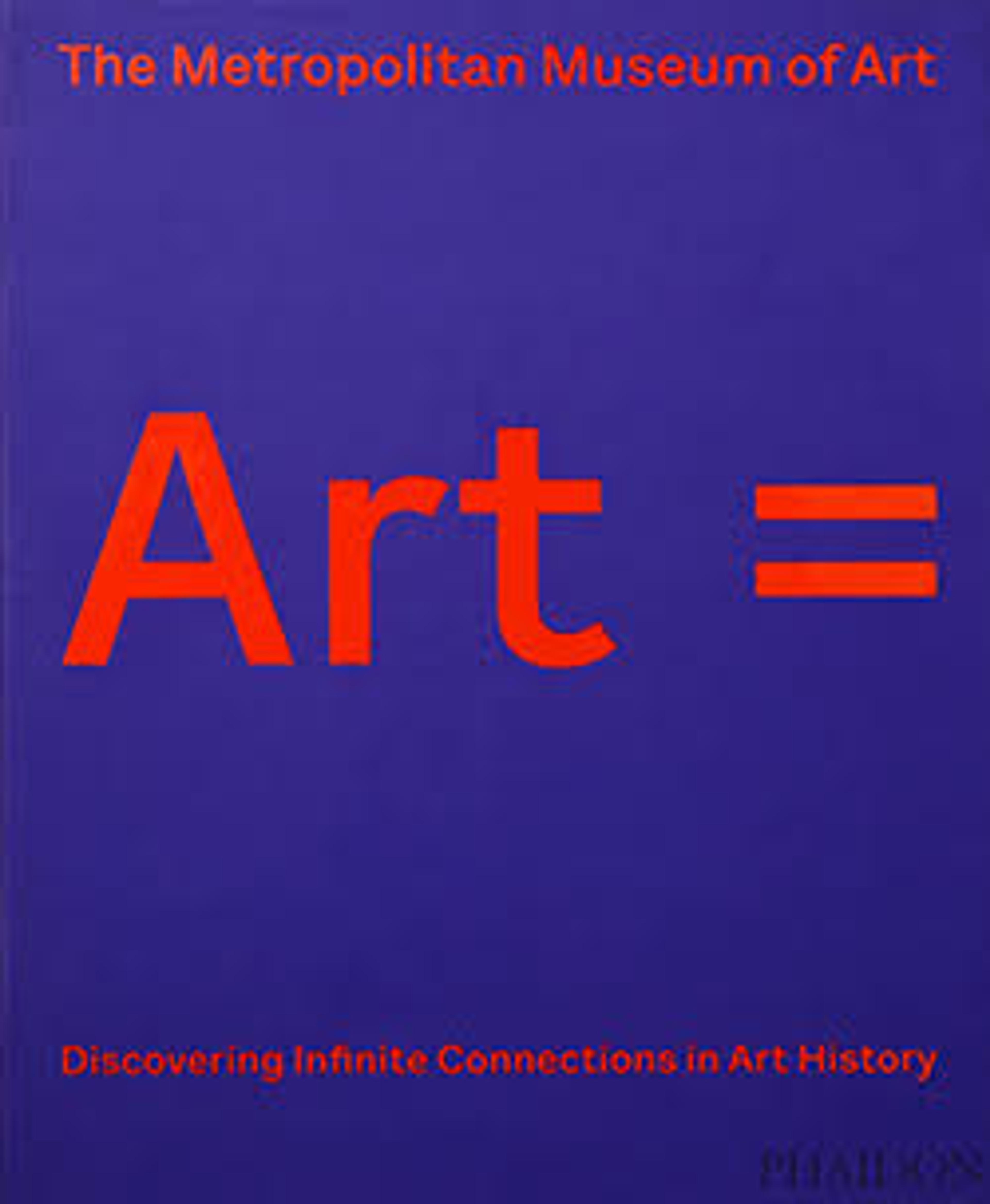
Art = Discovering Infinite Connections in Art History
The Metropolitan Museum of Art’s renowned collection spans the globe and represents over five thousand years of human creativity. This innovative book celebrates the Museum’s 150th anniversary and highlights its the most popular works while offering fresh ways of exploring visual culture from prehistory to the present. Art = also celebrates the 20th anniversary of The Met’s award-winning online feature, the Heilbrunn Timeline of Art History. The book draws on the diversity of interests expressed by the Museum’s online visitors by featuring wide-ranging texts and images from the most viewed webpages of this popular digital project.
Unlike traditional surveys of art history, this volume groups works of art by thematic keywords, providing a new perspective on these well-known paintings, sculptures, photographs, decorative arts, and much more. The nearly 900 works of art in Art = appear across three color-coded chapters: Material/Technique, Period/Place/Style, and Object/Subject. In the first section, works of art are grouped by medium or method such as Drawing, Marble, Watercolor, and Wood. The second section organizes work by time period, movement, or geography, allowing readers to focus on topics such as Ancient Egyptian Art, Impressionism, and Japanese Art. The third section arranges work by motifs, such as Flowers, Food, and Motherhood and by object type, like Furniture, Jewelry, and Self-Portrait. Art = also features more than 160 informative essays written by the Museum’s experts that offer additional cultural and historical context. Color-coded symbols link each essay and work of art to other essays and keywords. The publication’s dynamic structure provides an experience that is different on each reading, inspiring new connections and raising the question: What does art equal today?
Met Art in Publication
Citation
Metropolitan Museum of Art (New York, N.Y.), Gwen Roginsky, Rachel High, Rebecca Morrill, and Diane Fortenberry, eds. 2020. Art =: Discovering Infinite Connections in Art History. London : New York, NY: Phaidon Press Limited ; The Metropolitan Museum of Art.